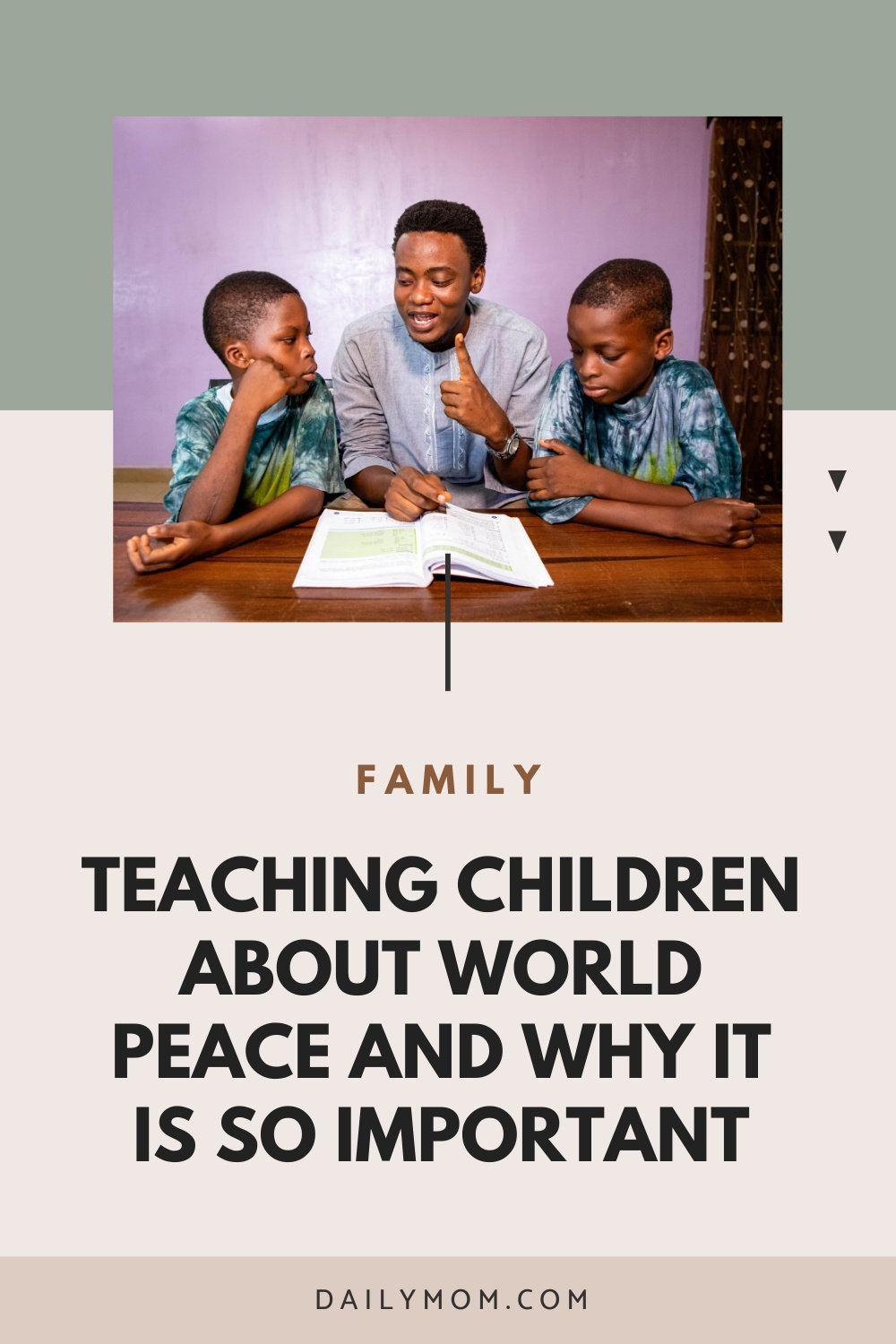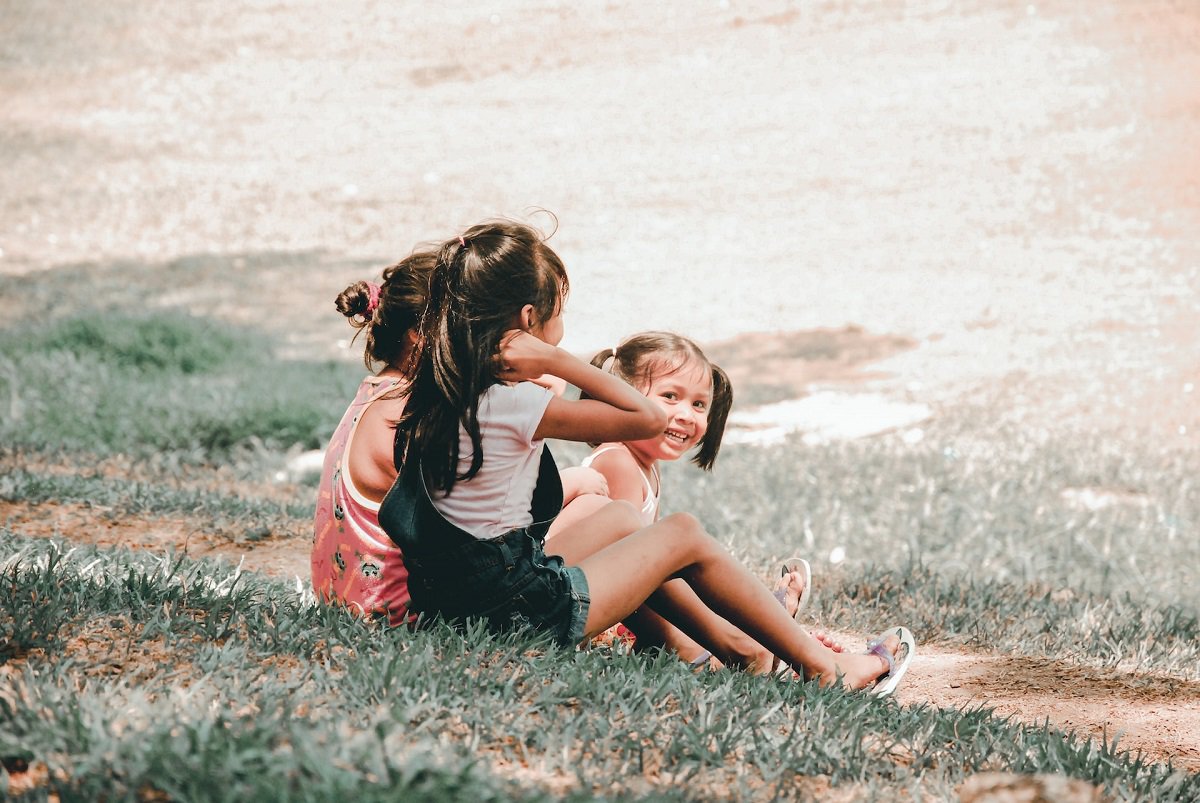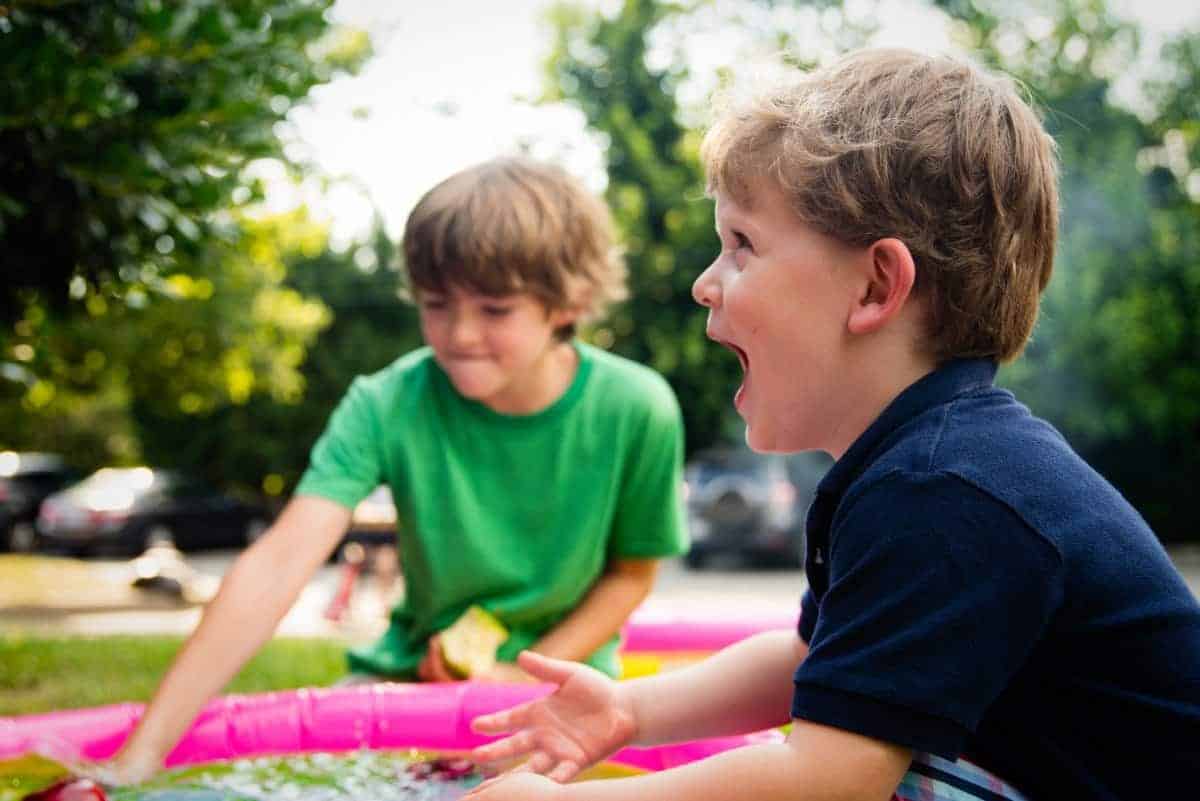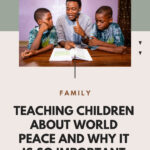Living in peace is arguably the most desirable and essential component of human life and society as a whole. Yet, these days the news about aggression, riots, and wars occupies almost every TV and social media channel. That’s why it’s vital to make our children understand that violence is not the answer to a problem and is not okay. Here we will explore the importance of teaching peace to your children, especially when we are talking about world peace, and the effective methods to achieve it.
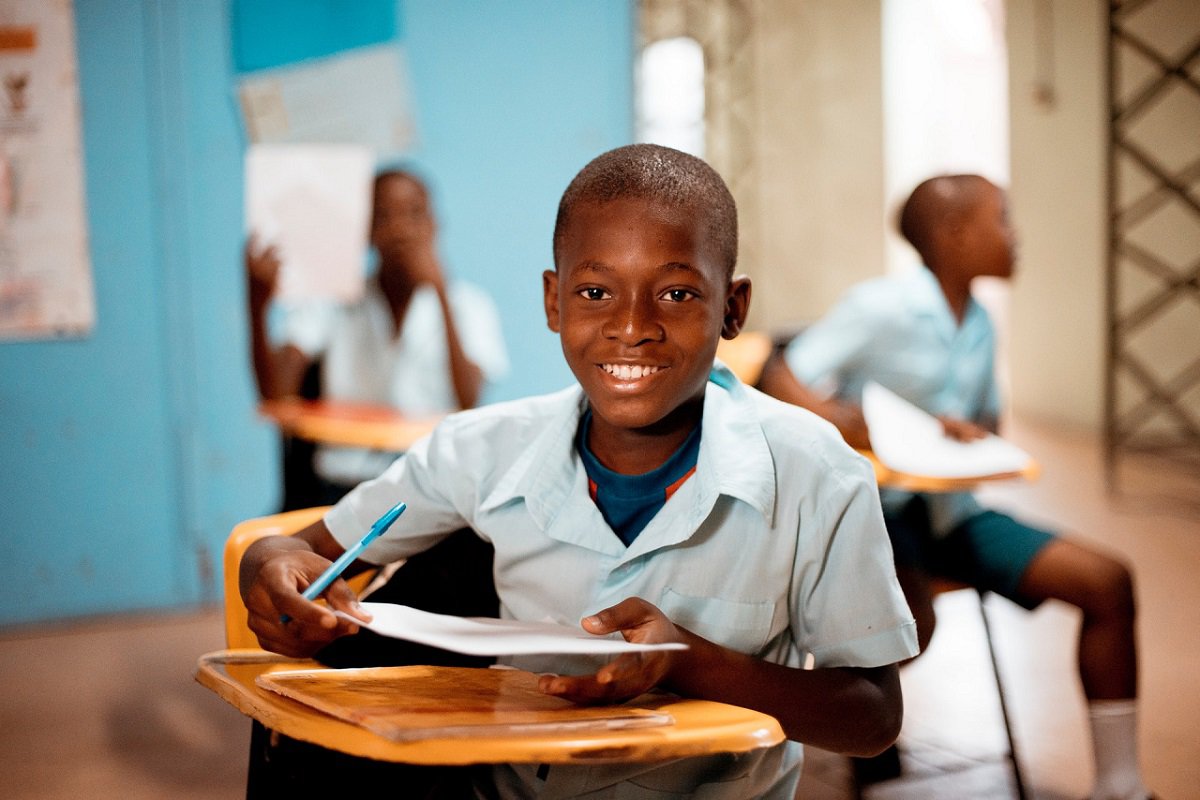
Why Should We Teach Peace to Children?
Children are our future, so if we want it to be peaceful and prosperous, we must teach the kids how to maintain peace.
Without peace, people face destructive external forces and circumstances that they cannot control, making their life a struggle and decreasing their chances to develop and improve as a person. Low standards of life and constant fear decrease humanity, a key component of striving for peace and defending fundamental human rights and freedoms.
Read More: 6 Simple Ways to Help Kids Cope with Changes
The connection between peace and well-being
Peace is closely connected with the well-being of each person and the entire community. Moreover, it’s a two-way connection. When the country’s citizens are happy, they have more trust in the government and are less likely to rebel against the existing authority.
Countries that do not participate in wars develop economically and technically much faster than warring countries. Peace makes it possible to concentrate resources on education, medicine, technology, etc.
Consequently, the standard of living rises, and the citizens become more educated, well-paid, and healthy since they have access to modern medical treatment.
Worldwide consequences of aggressiveness in societies
Aggressiveness and violence negatively impact the person and society in many ways. For example, it creates intercountry conflicts, crime, and wars. For this reason, managing these two deviant behaviors is a focus of criminal justice systems.
Violence and war inhibit the building of a human-rights-centered society. It concerns the basic rights to freedom of speech, gender equality, and many other aspects that are integral to highly developed societies.
The war also affects the economy by declining the working population and increasing the national debt, inflation, and poverty. In addition, the affected people’s mental health also suffers, with anxiety and depression in the lead.
The Reason to Start Peace Education Early
Studies show that aggression first manifests in young children aged 18 months and gradually declines by age 5. Then, it briefly reappears in adolescence and subsides in adulthood if the person is mentally healthy. That’s why children should learn the concepts of peace from a young age and see how they’re implemented in daily life.
What makes kids better learners?
Children and teenagers learn faster than adults because they are more open to new experiences and don’t give up after the first failure. They also have better memory and concentration, which usually declines with age.
It’s no secret that childhood is the stage in our development when the brain most easily absorbs information. Maria Montessori believed that a child goes through a series of “sensitive” periods during development.
When this phase is over, a person will put in more effort to learn the same skill if they skipped it earlier. And the older you get, the less enjoyable and more complicated it is to learn something new.
According to Emily G. Liquin and Alison Gopnik’s research, children are more exploratory and learn the structure of their environment better. Additionally, they don’t jump to conclusions as fast as adults with a developed system of views, so their minds and hearts are free from judgment and prejudice.
How role models shape our children’s views and behavior
The most influential role models for kids and teens are their parents, caregivers, peers, and teachers. They look at all these examples and implement the fragments of a particular behavior in their lives.
Different role models have different effects. For example, peers have more influence on everyday behavior, appearance, choice of hobbies, etc. On the other hand, parental influence is more thorough. It forms the character, attitudes, and views and includes religious values, ambitions, and plans for the future (education, work, relationships). Thus, the parents must be a positive example to their kids and control what kind of people surround them.
Read More: 12 Tips For Positive And Peaceful Parenting
How Do You Teach Peace to Kids?
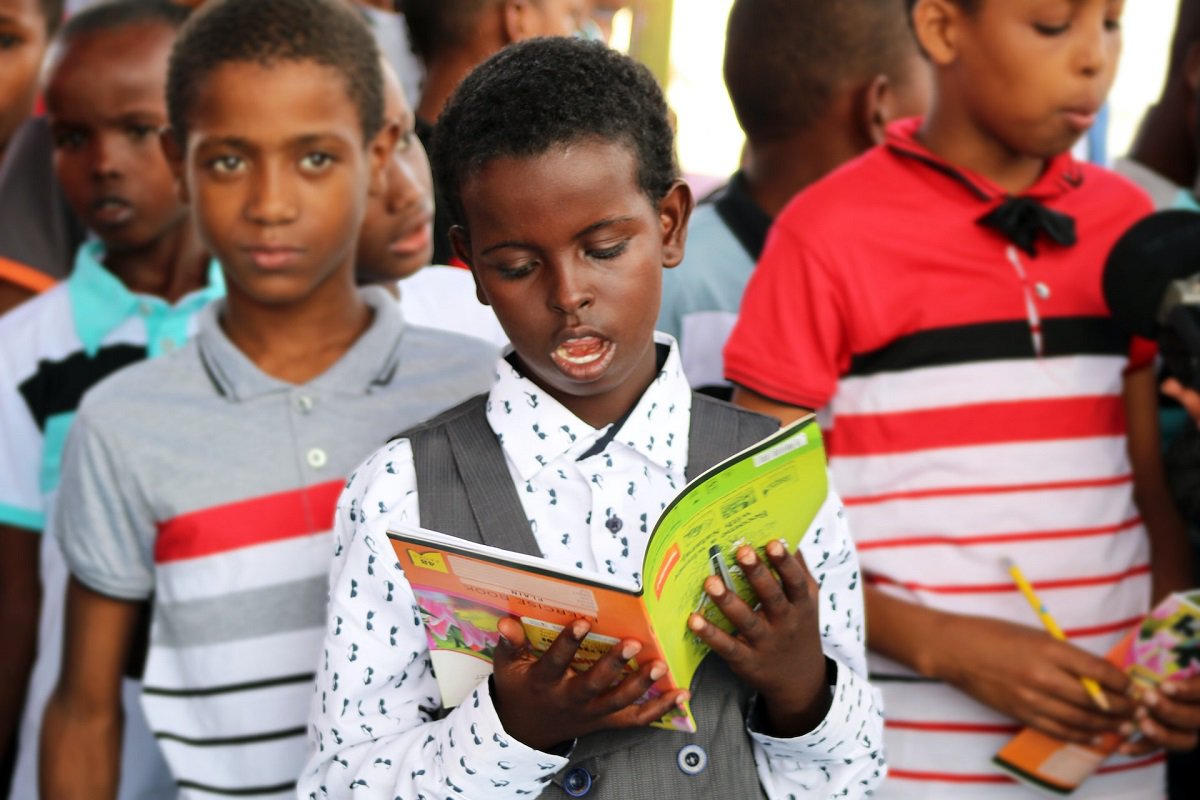
Teaching peace to young kids should include two fundamental components. The first is to teach kids peacebuilding skills, such as conflict resolution and empathy, by integrating peace concepts into the school curriculum. And the second component is to create a peaceful environment in the classroom and at home, which we’ll discuss later.
How to help children define the concept of peace
Peace education should begin with an understanding of the concept. So, the first thing is to define peace together with kids. A Peace Day is probably the best time to do it.
Begin by asking the children what they think peace is and what it includes. Write the answers on the board, summarize them, and give real-life examples. You can also make up a story with two different endings – a peaceful and a conflicted one – and ask the kids to identify which is which.
Defining peace may be challenging because children are not familiar with this concept. But in time, they will learn to distinguish good from evil.
Peacebuilding skills children need to master
- Active listening.
Active listening is an essential skill every child should learn early on. It helps understand the message and emotions of other people by paying full attention to what they’re saying. Active listeners are also better problem solvers and can find a peaceful solution in any situation.
So, how can you teach children to listen actively? Below are a few ideas for parents:
- read different books aloud and then ask the child what the story was about
- always say what you mean, and don’t be ambiguous
- don’t interrupt your child and respect their opinions
- talk about the things that your child is interested in and let them actively participate in the conversation
Also, here are a few easy methods to teach active listening to students in class:
- remove distracting objects and posters from the classroom
- employ multisensory activities that engage several senses to learn (reading and sketching, singing and writing, etc.)
- explain a topic and ask students to repeat some part or paraphrase the information
- ask children if they agree or disagree with the material (with reasoning)
- for younger kids, use active listening games, such as “Simon says”
- Empathy.
Empathy is not an innate ability but a consequence of upbringing from an early age. It’s also a foundation of emotional intelligence.
For parents, the first important step in developing empathy in children is to empathize with all their problems. Don’t make fun of or deliberately downplay an event if the child is upset. And never tell them how they should feel about something.
For example, don’t shut them out if they fall and start crying. Instead, show your support and let the child share their feelings. Otherwise, they would think it’s okay to turn a blind eye to other people’s sufferings.
Another technique for parents and teachers is to read a book in class or at home and ask the kids to identify the emotions of different characters. For instance, prepare the cards with several feelings and give them to the children. Let them choose the one they think reflects the main hero’s state and explain why.
- Conflict resolution.
“Peace is not the absence of conflict; it is the ability to handle conflict by peaceful means.” – Ronald Reagan.
Conflicts are an inevitable part of every person’s life. But unfortunately, not all people can deal with these issues peacefully, mainly because they didn’t learn how.
Essentially, you can use a few steps to teach the kids the right way to resolve conflicts. First, a responsible adult should let both sides (kids) tell their side of the story. The second step is summarizing what they said to make a bigger picture.
Then, both children should propose solutions to the problem without the teacher or the parent helping them. This way, the kids will learn democratic ways of resolving their disputes and going through with their decisions.
Read More: Social Etiquette: Why Teaching Children Manners Early is Important
Techniques to Incorporate the Practice of Peace in Daily Life

- Create a peaceful environment.
Teachers and parents should create and maintain a peaceful atmosphere of mutual respect, tolerance, and honesty. You can also establish rules, such as resolving conflicts using only respectful words.
No matter who you talk to or discuss in front of the child – always be an example to the kids. Don’t use derogatory terms regarding other people because children are susceptible and may copy your behavior.
- Teach kids social responsibility.
Social responsibility means that kids should act in a way beneficial for the community they live in and the environment. So how can you raise a socially responsible kid? There are a few ways.
For example, volunteer together with your child. Choose something enjoyable – participate in an art performance for local assisted facilities. Another good idea is to involve kids in charity activities, such as giving their old toys to the refugee shelters.
- Engage kids in problem-solving activities.
Problem-solving skills allow kids to develop resilience and patience, much needed in grown-up life. There are tons of problem solving activities in the classroom. For example, you can write down several problematic situations on a separate piece of paper and put them in a box or a jar. Then, the kids should pick one and think of a solution.
The situations don’t have to be make-belief. For instance, you can choose several issues in your city or country and discuss them with children. You might be surprised by their fresh perspective.
Teaching children peace starts with the environment – the family, teachers, coaches, peers, and other significant figures that surround the children. Every member of society should make a small contribution to creating and maintaining an atmosphere of trust, respect, and support. Only then will our children grow up socially responsible and eventually promote peace in their daily lives.
WANT TO READ MORE?
Check out Daily Mom’s article 5 tips for teaching politeness to children for more advice, tips, and tricks.
💖 NEWSLETTER: DAILY READS IN YOUR INBOX 💖
Sign up to receive our picks for the best things to do, see and buy so you can relax and focus on more important tasks! Let us help you be the best version of yourself you can be!
GET MORE FROM DAILY MOM, PARENTS PORTAL
Newsletter: Daily Mom delivered to you
Facebook: @DailyMomOfficial
Instagram: @DailyMomOfficial | @DailyMomTravel
YouTube: @DailyMomVideos
Pinterest: @DailyMomOfficial
📌 LOVE IT? PIN IT!📌
